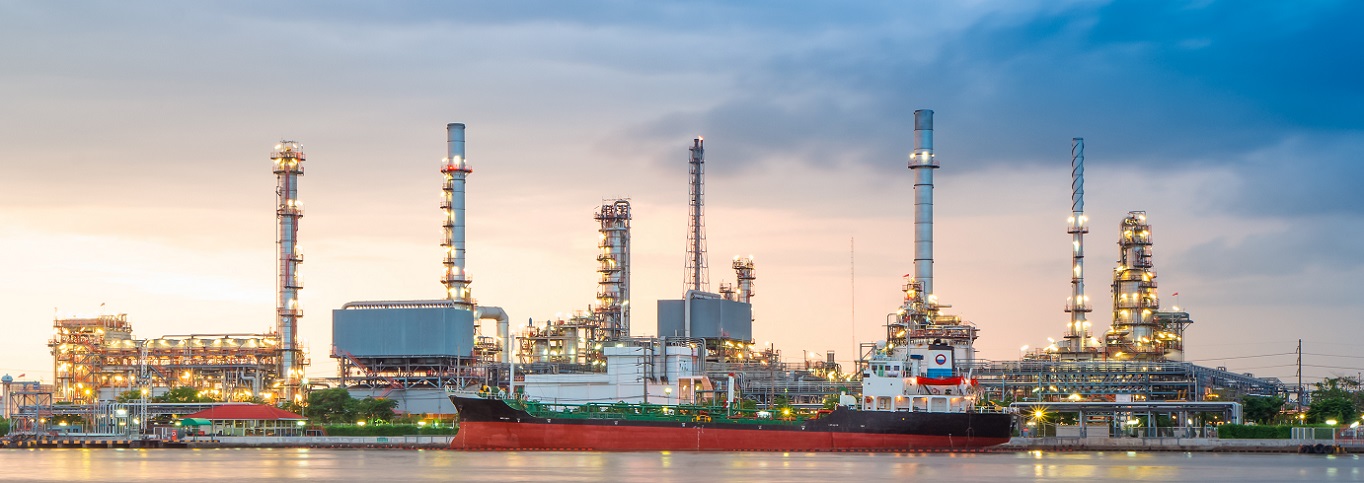Taking the temperature of industry
Case study
Accurate temperature measurement is vital in countless industries; everything from pharmaceuticals and food production to materials manufacturing and aviation.

Helping NZ’s petrochemical industry stay ahead
For more than twenty years, New Zealand’s petrochemical industry has looked to MSL for its temperature expertise. Under the leadership of Distinguished Scientist, Dr Peter Saunders, the lab has provided consultancy, advice and training to companies like Methanex and Refining NZ, ensuring the safe and efficient operation of their plants.
Too hot?
Headquartered in Canada, with sites scattered across the globe, Methanex is the world’s largest producer of methanol. At their site in Taranaki, the company converts natural gas into hydrogen, and then to methanol. Doing this requires furnaces – some as tall as a five-storey building – that can heat the gas to temperatures in excess of 900 °C. At the heart of a furnace’s operation are its 680 process tubes. Made from exotic metals that can withstand extreme heat, each tube costs upwards of $30,000 to replace. “Companies like Methanex want to get the maximum lifetime from their materials,” explains Dr Saunders. “But as temperatures increase, even these materials will suffer. Being just 15 degrees too high will halve the tube’s lifetime.” So it is critical to know exactly what temperature each and every tube operates at.
Measuring furnace temperatures to the required level of accuracy is not straightforward. Access is via a number of small ‘portholes’, which can be opened only for short periods of time. MSL scientists use radiation thermometers, devices that look a bit like a camera. As the name suggests, these thermometers can determine the temperature of an object from the thermal (infrared) radiation it emits. But while they might be fast and robust, radiation thermometers are prone to a number of errors, including the radiation that reflects from nearby surfaces. “There’s the infrared signal from the object you’re interested in and a reflective component from other hot sources around it,” says Saunders. “The thermometer can’t distinguish between them, so it tends to give values that are too high.”
To tackle this, Saunders developed computer models of the thermal environment inside industrial-scale furnaces. These models could be altered to reflect the geometry and demands of each plant, allowing operators to take a small number of measurements and then calculate the true temperature of each tube.
This innovation caught the attention of Quest Integrity, a global company that specialises in advanced inspection and engineering assessment services for the energy industry. “The ability to measure accurate temperatures in a refinery is critical for process reasons, and also for defining the integrity of assets and furnaces,” says Dr Andy Saunders-Tack, chief engineer at Quest Integrity NZ. Quest and MSL now have a licensing agreement, bringing MSL’s work to a world-wide audience. “Peter has developed the algorithms to allow us to develop accurate temperatures from the thermometry applied. We turned that into a software platform to allow us to sell to customers,” says Saunders-Tack.
Too cold?
The ability to measure temperature in challenging conditions, combined with a deep knowledge of thermal physics has led Saunders to valuable insights for his industrial partners. If you have a gas heater at home, you might know that burning natural gas produces water vapour. This is also true in petrochemical furnaces, and if not accounted for, it can affect temperature measurements. Operators tune their furnaces by scanning thermometers from tube to tube, making sure that the readings are all fairly uniform. “The issue is that when operators measure the tubes at the centre of the furnace, they may not account for the large error from water vapour,” says Saunders. “It means that while the tube temperatures look to be the same from the edge to the centre, those central tubes are actually much colder.” For Methanex, the temperature difference was significant, so they took MSL’s advice to increase the tube temperature in that region by 15 °C. The result? A profit boost of $1 million a year thanks to increased productivity that didn’t compromise the lifetime of the tubes.
Just right
MSL also supports the measurement tools that plant operators use on-site. We do this via our high-accuracy standard radiation thermometer, calibrated against blackbody furnaces representing a range of industrially-relevant temperatures. This facility has become the go-to option for a large number of Quest Integrity USA’s customers. “Labs in the US could do the calibrations, but the truth is that these industrial customers trust us. They know that we intimately understand their application, so we can give them a fit-for-purpose calibration plus advice based on years of experience,” says Saunders.
